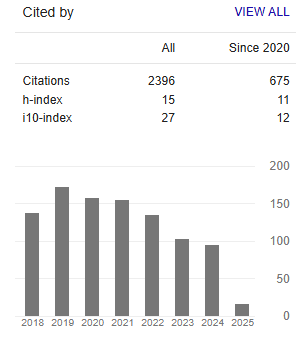Human Capital and Firm Performance: A Bibliometric Review of Empirical and Theoretical Contributions
DOI:
https://doi.org/10.5281/zenodo.15501545Keywords:
Human Capital, Firm Performance, Competitive Advantage, Organizational Resilience, Bibliometric AnalysisAbstract
This research investigates the intricate relationships between organizational performance and human capital based on a systematic bibliometric analysis that combines empirical and theoretical frameworks. Human capital, as a surrogate for employees' knowledge, skills, and abilities, is a major influencer of organizational performance; however, its exact role is controversial. The research aims to answer three core questions: (1) the direct and indirect impact of investment in human capital on performance metrics such as profitability, productivity, innovation, and market capitalization; (2) the types of human capital development required to create a long-term sustainable competitive advantage through initiatives such as talent management, knowledge transfer, and employee engagement; and (3) the complementary interplays of human capital with other organizational capitals (social, structural, and technological capital) in order to create resilience and adaptability. The findings show that human capital investment has a strong positive impact on financial and non-financial performance, and skill upgrading via training has a direct impact on productivity and innovation growth. Talent management and knowledge-sharing culture are fundamental to sustaining competitive advantage, and employee engagement mediates between human capital intervention and organizational performance. The interplay between human capital and complementary resources—i.e., social capital (networks), structural capital (systems), and technological capital (IT infrastructure)—also enhances organizational performance and resilience, especially in fast-changing environments. The study uses bibliometric analysis to determine publication trends, key contributions, and research gaps, and identifies the strengths of theoretical approaches like the Resource-Based View and Human Capital Theory. Industry-specific findings show that there are discrepancies in the impact of human capital, with the technology and manufacturing sectors gaining the most. While there is extensive evidence, discrepancies in measurement and contextual factors require further research. This review fills theoretical gaps, with policy implications for policymakers and business leaders to improve human capital strategies for guaranteeing sustainable organizational success.
Downloads
Published
Issue
Section
License
Copyright (c) 2025 Mr. Onkar Shinde, Dr.Neera Singh (Author)

This work is licensed under a Creative Commons Attribution 4.0 International License.






